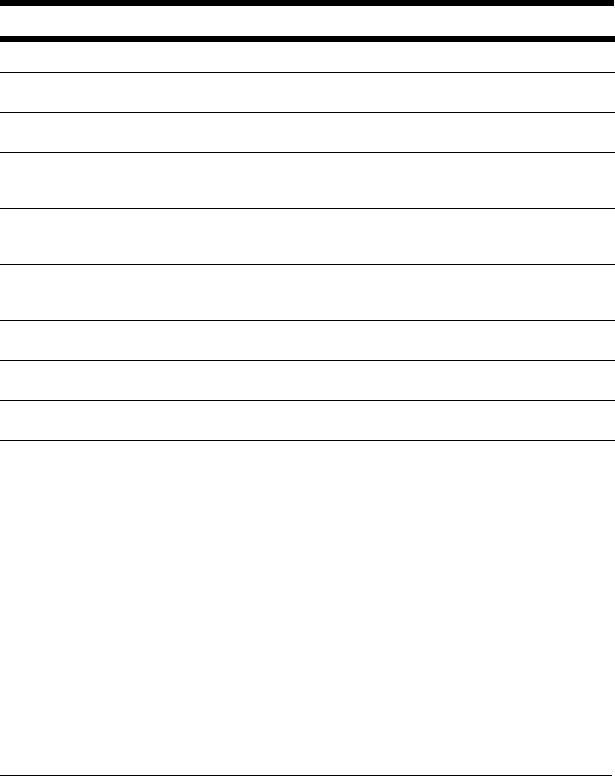User Manual
Table Of Contents
- Important Information
- Overview of Calculator Operations
- Turning On the Calculator
- Turning Off the Calculator
- Selecting 2nd Functions
- Reading the Display
- Setting Calculator Formats
- Resetting the Calculator
- Clearing Calculator Entries and Memories
- Correcting Entry Errors
- Math Operations
- Memory Operations
- Calculations Using Constants
- Last Answer Feature
- Using Worksheets: Tools for Financial Solutions
- Time-Value-of-Money and Amortization Worksheets
- TVM and Amortization Worksheet Variables
- Using the TVM and Amortization Variables
- Resetting the TVM and Amortization Worksheet Variables
- Clearing the Unused Variable
- Entering Positive and Negative Values for Outflows and Inflows
- Entering Values for I/Y, P/Y, and C/Y
- Specifying Payments Due With Annuities
- Updating P1 and P2
- Different Values for BAL and FV
- Entering, Recalling, and Computing TVM Values
- Using [xP/Y] to Calculate a Value for N
- Entering Cash Inflows and Outflows
- Generating an Amortization Schedule
- Example: Computing Basic Loan Interest
- Examples: Computing Basic Loan Payments
- Examples: Computing Value in Savings
- Example: Computing Present Value in Annuities
- Example: Computing Perpetual Annuities
- Example: Computing Present Value of Variable Cash Flows
- Example: Computing Present Value of a Lease With Residual Value
- Example: Computing Other Monthly Payments
- Example: Saving With Monthly Deposits
- Example: Computing Amount to Borrow and Down Payment
- Example: Computing Regular Deposits for a Specified Future Amount
- Example: Computing Payments and Generating an Amortization Schedule
- Example: Computing Payment, Interest, and Loan Balance After a Specified Payment
- TVM and Amortization Worksheet Variables
- Cash Flow Worksheet
- Bond Worksheet
- Depreciation Worksheet
- Statistics Worksheet
- Other Worksheets
- APPENDIX - Reference Information

Time-Value-of-Money and Amortization Worksheets 37
Example: Computing Regular Deposits for a
Specified Future Amount
You plan to open a savings account and deposit the same amount of
money at the beginning of each month. In 10 years, you want to have
$25,000 in the account.
How much should you deposit if the annual interest rate is 0.5% with
quarterly compounding?
Note:
Because C/Y (compounding periods per year) is automatically set
to equal
P/Y (payments per year), you must change the C/Y value.
Answer: You must make monthly deposits of $203.13.
To Press Display
Set all variables to defaults. &}!
RST 0.00
Set payments per year to 12. &[12 !
P/Y=
12.00
1
Set compounding periods to 4. # 4 !
C/Y=
4.00
1
Set beginning-of-period
payments.
&] &V
BGN
Return to standard-calculator
mode.
&U
0.00
Enter number of deposits using
payment multiplier.
10 &Z,
N=
120.00
1
Enter interest rate. .5 -
I/Y=
0.50
1
Enter future value. 25,000 0
FV=
25,000.00
1
Compute deposit amount.
C /
PMT=
-203.13
7










